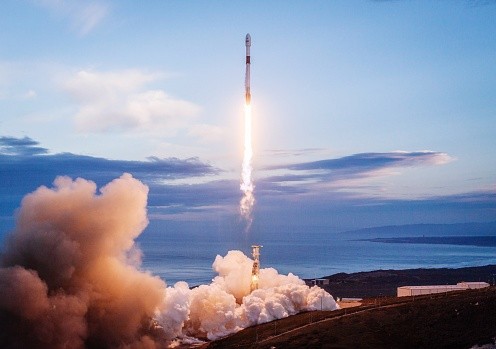Light speed travel is possible.
Well, we got you there (or at least we think we did). It is indeed possible to travel at the speed of light, but only on one condition: if you're a photon. And a photon is a particle that makes up... light.
Now that's out of the way, what about light speed travel using technology?

There are specific models which can theoretically allow spacecraft to reach the so-called cosmic speed limit. And the proposed tech behind them (alongside the effects of actually traveling at light speed, as per Futurism) are the reasons why it's a very bad idea in the first place.
Here's why.
Light Speed Travel With Conventional Propulsion
Conventional propulsion technology (i.e. rockets) are powerful enough to propel massive spacecraft like those of NASA's, SpaceX, or Blue Origin's, away from Earth's gravity.

The amount of energy to do so, however, is already quite astounding. For example, sending the original Space Shuttle into space required as much energy as that produced by 13 Hoover Dams, according to NASA.
The Hoover Dam on its own can produce 4 billion kilowatt-hours of energy every year. Multiply that by 13, and you get 52 billion kilowatt-hours' worth of energy.
What about light speed travel? Well, if you're only using conventional rockets, you'll literally need an infinite amount of energy to propel a spacecraft to light speed, according to Science World.
Try producing that much energy without going insane.
Light Speed Travel Via Other Means
NASA made headlines several years ago when they announced that they're working on a "real" warp drive. There's so much jargon involved when trying to explain how it works, but this is the simplest one.

The warp drive will expend a massive amount of energy to warp the fabric of spacetime behind it. Then, alluding to Albert Einstein's General Theory of Relativity, this warping of spacetime could theoretically "shorten" the distance that the spacecraft will have to travel.
With this, the warp drive could technically make light speed travel achievable. However, the Alcubierre Warp Drive still requires an insane amount of energy that can't be produced in a reasonable amount of time.
Suppose That Light Speed Travel Can Be Achieved--What Then?
This is where things get interesting, if not a bit scary.
Going back to Einstein's equations, they paint a not-so-good picture. For one, traveling at the speed of light will turn your mass infinite. You'd feel like your weight is infinite (without actually weighing more), and that's not a good thing to experience at all.
Another reason why light speed travel is a bad idea is the cosmos itself. Going really fast would expose your spacecraft to uncountable amounts of dangerous particles which could destroy your ship entirely, unless it has a shield.
Lastly, traveling at light speed (or even close to light speed) will essentially time-travel you into the future because of a phenomena called time dilation.

In simpler terms, the faster you move, the slower time passes for you. This would be bad if, for example, you decide to contact ground control during your journey. You think only a few minutes have passed for you, but on Earth, several decades have already passed.
So, do you still want to travel at the speed of light?
This article is owned by Tech Times
Written by RJ Pierce
ⓒ 2025 TECHTIMES.com All rights reserved. Do not reproduce without permission.




